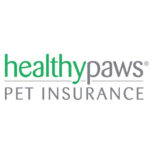Best Pet Insurance For Miniature Schnauzers In 2026
In my estimation, Healthy Paws provides the best insurance coverage for Miniature Schnauzers.
We’ve saved shoppers an average of $350 per year on their pet insurance.
If you’re a Miniature Schnauzer owner, you’re likely focused on your dog’s health. Since Miniature Schnauzers are a pure breed, they’re more likely to develop genetic health conditions compared to mixed breeds. Unfortunately, 4 out of 5 pet parents can’t afford a $500 emergency vet bill without help. Pet insurance can reduce that financial burden.
In this review, we’ll highlight top pet insurance options for Miniature Schnauzers and help you choose a plan that meets your needs. Like human health insurance, pet insurance provides better care options and lowers out-of-pocket costs. The good news is it’s much cheaper than health insurance for people.
Best Pet Insurance Companies For Miniature Schnauzers, 2026
Various pet insurance options for Miniature Schnauzers emphasize pet well-being and financial protection, but they differ in specific offerings. What’s suitable for one Miniature Schnauzer may not be for another.
Here’s our review of the best pet insurance companies specializing in Miniature Schnauzers.



Compare The Best Pet Insurance Companies For Miniature Schnauzers
Our overview of pet insurance providers for Miniature Schnauzers showcases each company's distinctive advantages.
| Overall Rating | Best For | Waiting Period | Reimbursement % | Benefit Limit | Get A Quote | |
|---|---|---|---|---|---|---|
| Healthy Paws |
|
Overall |
15 days accidents/illness |
70%, 80%, 90% |
Unlimited annual and lifetime |
Instant Quote |
| Lemonade |
|
Cheap |
2 days accidents, 14 days illness |
70%, 80%, 90% |
$5,000 to $100,000 annually |
Instant Quote |
| ManyPets |
|
Puppies |
15 days accidents/illness |
70% or 80% |
Unlimited annual and lifetime |
Instant Quote |
| Pumpkin |
|
Older Dogs |
14 days accidents/illness |
90% |
$10,000, $20,000 or unlimited |
Instant Quote |
| Spot |
|
Multiple Pets |
14 days accidents/illness |
70%, 80%, 90% |
$2,500 to unlimited |
Instant Quote |
Our Methodology
Opinions and ratings were formulated based on reviews of insurer websites, customer feedback, reviews from other sources, and personal usage of pet insurance.
Quotes Analyzed
Years Of Industry Experience
Brands Reviewed
Research Hours
Detailed Reviews Of The Best Miniature Schnauzer Insurance Companies
Best Overall
Key Statistics
Why We Like Them
⇅Healthy Paws excels in pet insurance by offering unlimited claim payouts and avoiding per-incident maximums or caps. This ensures you won’t face tough decisions about your pet’s health care due to coverage limits. Their policy is easy to understand, without costly add-ons, and they allow visits to any licensed veterinarian. Claims are conveniently submitted through their app or website, usually processed within two days.
Benefits & Drawbacks
⇅- There are no restrictions on how much can be paid annually or over a lifetime.
- We guarantee a refund within 30 days.
- You can anticipate your claims being processed within two days.
- Payments could potentially be made directly to the vet. ✓
- There's no typical wellness program. ✘
Runner-Up For Best Overall
Key Statistics
Why We Like Them
⇅In our assessment, Lemonade was the most budget-friendly pet insurance option for Miniature Schnauzers. Unlike Healthy Paws, Lemonade offers coverage limits from $5,000 to $100,000 per year, with premiums escalating based on the chosen limit. Their standard policy covers accidents, illnesses such as cancer and heart disease, common ailments like broken bones, and hip dysplasia often seen in older Miniature Schnauzers. However, exclusions typical of most insurers apply, including preexisting conditions, dental issues, behavioral problems, and elective procedures.
Benefits & Drawbacks
⇅- Available choice for a wellness plan.
- Accident insurance starts within two days.
- Enjoy a 10% savings when you bundle pet insurance with Lemonade's home, renters, or car insurance. ✓
- Pet owners do not have access to continuous telehealth services.
- It costs more to have your vet checkups covered.
- Coverage does not extend to prescription food or microchipping. ✘
Best For Puppies
Key Statistics
Why We Like Them
⇅ManyPets offers comprehensive insurance coverage specifically for puppies. Rates are not affected by pre-existing conditions, and treated illnesses may be covered after 18 months, with unrelated conditions still qualifying for coverage. Young Miniature Schnauzers, like all puppies, can suffer from illnesses such as poisoning, ingestion of foreign objects, and accidents due to their youthful exuberance. Early insurance coverage reduces the likelihood of exclusions for pre-existing conditions as they age.
Benefits & Drawbacks
⇅- Available in 40+ states
- Provides for vet checkup expenses related to sickness and accidents.
- Suggests voluntary wellness options. ✓
- There is no pet telehealth assistance line open all day and night.
- Pet behavioral therapy is outside the scope of this plan.
- Alternative treatments are not reimbursable. ✘
Best For Older Dogs
Key Statistics
Why We Like Them
⇅Older Miniature Schnauzers often develop genetic illnesses such as cruciate ligament problems and hip dysplasia, requiring costly treatments. Pumpkin pet insurance offers coverage without waiting periods for these conditions and includes reimbursement for veterinary exams if you need to treat your aging Miniature Schnauzers. They offer a range of coverage options for common Miniature Schnauzers health issues, including surgeries and dental care, with a choice of deductibles and a standard 90% reimbursement rate.
Benefits & Drawbacks
⇅- Available wellness plan for selection
- Reduced premiums for multi-pet insurance policies.
- Pets like dogs and cats over 8 weeks old can receive a 90% reimbursement. ✓
- Pet telehealth services aren't available every hour of every day.
- They don't provide a plan limited to accidents. ✘
Best For Multiple Pets
Key Statistics
Why We Like Them
⇅Miniature Schnauzers owners often have multiple pets due to the breed’s friendly disposition. Spot offers a 10% discount for insuring more than one pet, resulting in significant savings. Their optional preventive care plan covers wellness services such as an annual vet visit, fecal test, and teeth cleaning, and includes coverage for certain vaccinations. Spot provides a 30-day money-back guarantee if you’re dissatisfied with their coverage or service. They also reimburse up to 90% of eligible vet bills and offer a 24/7 vet helpline. Additionally, you have the freedom to visit any U.S.-licensed veterinarian or specialist.
Benefits & Drawbacks
⇅- Touches on microchip implanting
- You can select a $100 deductible option.
- Accessible pet telehealth support available 24/7. ✓
- Accidents involve a 14-day waiting period, which is longer compared to the 2-day wait offered by some leading competitors. ✘
Average Cost Of Pet Insurance For Miniature Schnauzers
| Company | Deductible | Annual Reimbursement % | Monthly Price | Age of Dog |
| Healthy Paws | $500 | 70% | $70.30 | 5 year old |
| Lemonade | $500 | 70% | $40.00 | 5 year old |
| Spot | $500 | 70% | $73.34 | 5 year old |
| Healthy Paws | $500 | 80% | $36.52 | 1 year old |
| Lemonade | $500 | 80% | $20.67 | 1 year old |
| Spot | $500 | 80% | $53.80 | 1 year old |
| Healthy Paws | $500 | 70% | $37.64 | 3 month old |
| Lemonade | $500 | 70% | $29.13 | 3 month old |
| Spot | $500 | 70% | $83.12 | 3 month old |
Average Cost Of Typical Vet Procedures
| Typical Vet Procedure | Average Cost Of Procedure |
| Puppy vaccinations | $75-100 |
| Flea & tick prevention | $40-200 |
| Heartworm prevention | $24-120 |
| Spay or neuter surgery | $200-800 |
| Annual exam | $240-600 |
| Teeth cleaning | $200-500 |
| Microchip | $40 |
Average Cost Of Emergency Vet Procedures
| Emergency Pet Procedure | Average Cost Of Procedure |
| General consultation/exam | $100-$150 |
| General bloodwork | $80-200 |
| X-rays | $150-$250 |
| Ultrasound | $300-$600 |
| 1-2 day hospitalization | $600-$1,700 |
| 3-5 day hospitalization | $1,500-$3,500 |
| Wound treatment & repair | $800-$1,500 |
| Emergency surgery | $800-$2,500 |
| Oxygen therapy | $500 |
Is Pet Insurance Worth It For Miniature Schnauzers?
Pet insurance is there to protect you from sudden, unexpected vet costs. A lot of pet owners cover these expenses on their own, but most can’t afford a $1,500 emergency vet bill. The right insurance could make all the difference in caring for your pet. It allows you to make medical decisions based on what’s best for your pet, not what you can afford. The value of insurance depends on what you expect. If your pet is being treated for a chronic condition, no insurer covers those costs. But if you find a policy that fits your needs and budget, it’s likely worth it.
Common Health Issues For Miniature Schnauzers
Miniature Shnauzers, like other purebred dogs, are often more vulnerable to health issues. Due to some breeders neglecting genetics in the breeding process, various health problems have become common within the Miniature Shnauzer breed. As a result, Miniature Shnauzers tend to be more susceptible to genetic conditions than other dogs.
These are a few of the common health concerns for Miniature Shnauzers:
- Pancreatitis
- Bladder Stones
- Hyperlipidemia
- Cataracts
- Progressive Retinal Atrophy (PRA)
- Diabetes
- Dermatitis
How To Find The Best Pet Insurance Company For You
The prices and types of pet insurance plans available vary among companies, making it difficult to choose one over another. Before applying for coverage, consider these tips to find the best plan for your pet.
Check Whether Your Pet Is Eligible
Insurance eligibility for puppies and kittens usually starts at 6 to 10 weeks old, depending on the insurer. Senior pets might not qualify for initial enrollment or may only receive accident coverage. Once enrolled, most plans offer lifelong coverage with continuous premium payments.
Research What’s Covered
Pet insurance generally covers treatment costs like surgery and medication when your pet is sick or injured. However, some services may require additional fees or aren’t included at all. Examples include:
- Exam fees: Some plans won’t cover the vet’s exam, even if they cover treatments like X-rays or surgery.
- Alternative therapies: Services like acupuncture or physical therapy may or may not be included in your plan.
- Behavioral therapy: Treatments for aggression or other behavioral issues aren’t always covered.
- Prescription food: Certain plans don’t cover food or supplements, even with a prescription.
- Dental care: Policies can differ on dental coverage. For instance, some won’t cover conditions like gingivitis unless your pet has had a recent cleaning. Wellness plans may include routine cleanings.
Also, pre-existing conditions, cosmetic work, and breeding expenses are typically excluded.
Decide How Much Coverage You Want
Many pet insurance plans have an annual payout cap, but some don’t. It’s up to you to decide how much coverage gives you peace of mind for vet bills. If your pet is mostly healthy, you might only need to cover routine care expenses for years. However, unexpected surgeries or serious illnesses could lead to significant financial burdens.
Understand Reimbursements And Deductibles
Pet insurance plans often reimburse you for a portion of your vet bill, typically offering reimbursement levels like 70%, 80%, or 90%.
Some plans pay a set fee for each treatment, which may be less than what your vet charges, so you would be responsible for paying the difference.
Most plans have a deductible, the amount you must pay before the insurance starts paying. Deductibles typically range from $100 to $250 or more. Some plans require a deductible for each condition, while others apply it annually.
Lower deductibles and higher reimbursement rates lead to higher premiums, while higher deductibles and lower reimbursement rates result in lower premiums.
Check Waiting Periods
Insurance plans typically have a brief waiting period, often around 14 days after purchase, before they cover general accident and illness treatments. Medical expenses incurred during this time are not reimbursed. Some plans impose longer waiting periods for specific conditions like cruciate ligament injuries, a frequent orthopedic concern in dogs. These ligaments are crucial for knee stability, and their injury can severely hinder a dog’s mobility.
Examine Extra Costs
A few pet insurance companies offer plans that cover routine services like vet check-ups and vaccinations. Before committing, assess whether the extra expense is justified by comparing the annual cost of the wellness plan with your average yearly spending on these services. Review the specifics, as what constitutes “wellness” coverage varies between insurers.
Compare Quotes
The cost of pet insurance depends on the insurer and the coverage level selected. Some pet insurers offer discounts, such as reduced rates for insuring multiple pets. However, a discount doesn’t automatically mean it’s the best option. To find the most suitable pet insurance, compare quotes from multiple plans with similar coverage amounts, deductibles, and reimbursement limits.
Factors That Impact Cost Of Your Pet Insurance Policy
Similar to how your health insurance works, the cost of pet insurance is determined by factors such as:
- Your location. Veterinary care costs in your area are considered when pricing your insurance.
- Your pet’s age. Older animals are more likely to face health problems, which makes their premiums higher.
- Your pet’s breed. Certain breeds are predisposed to specific health issues. For instance, bulldogs and Boston terriers often develop breathing problems, while large breeds like German Shepherds are prone to hip dysplasia. These risks are reflected in your premium.
- Your deductible and coverage. The lower the deductible, the higher your premium will be. For example, a $100 deductible means quicker reimbursements compared to a $500 deductible, but with higher monthly costs.
FAQs
Is pet insurance cheaper for purebred dogs?
Purebred dogs tend to have higher insurance rates due to their genetic inclination toward expensive health conditions, unlike mixed-breed dogs.
What is the average cost of owning a Miniature Schnauzer?
Initial costs, including vaccinations, food, grooming, and insurance, are roughly $3,000 for the first year, and then decrease to about $1,900 annually.
What insurance do you need for a dog?
Having pet insurance enables dog owners to afford veterinary bills and ensure their dog’s well-being.
Sources
⇅About Bob Phillips
Related Content
What Does Pet Insurance Cover? Is Pet Insurance Worth It? Does Pet Insurance Cover Spaying?
Find A Policy
Bernese Mountain Dog Insurance Pet Insurance For Greyhounds Staffordshire Bull Terrier Insurance
Pet Insurance In Your Area
Pet Insurance Texas City Pet Insurance Austin Pet Insurance San Antonio TX
